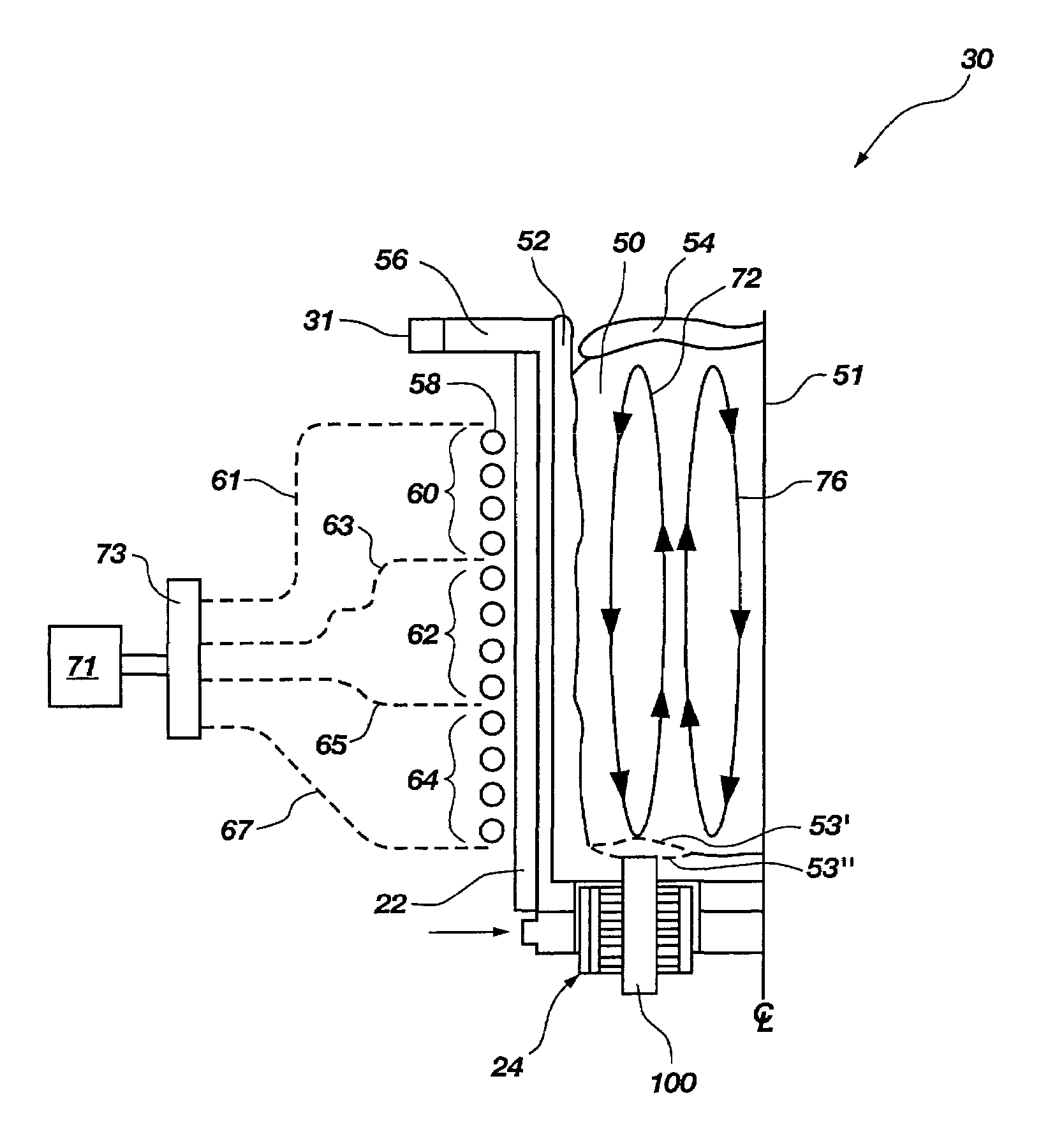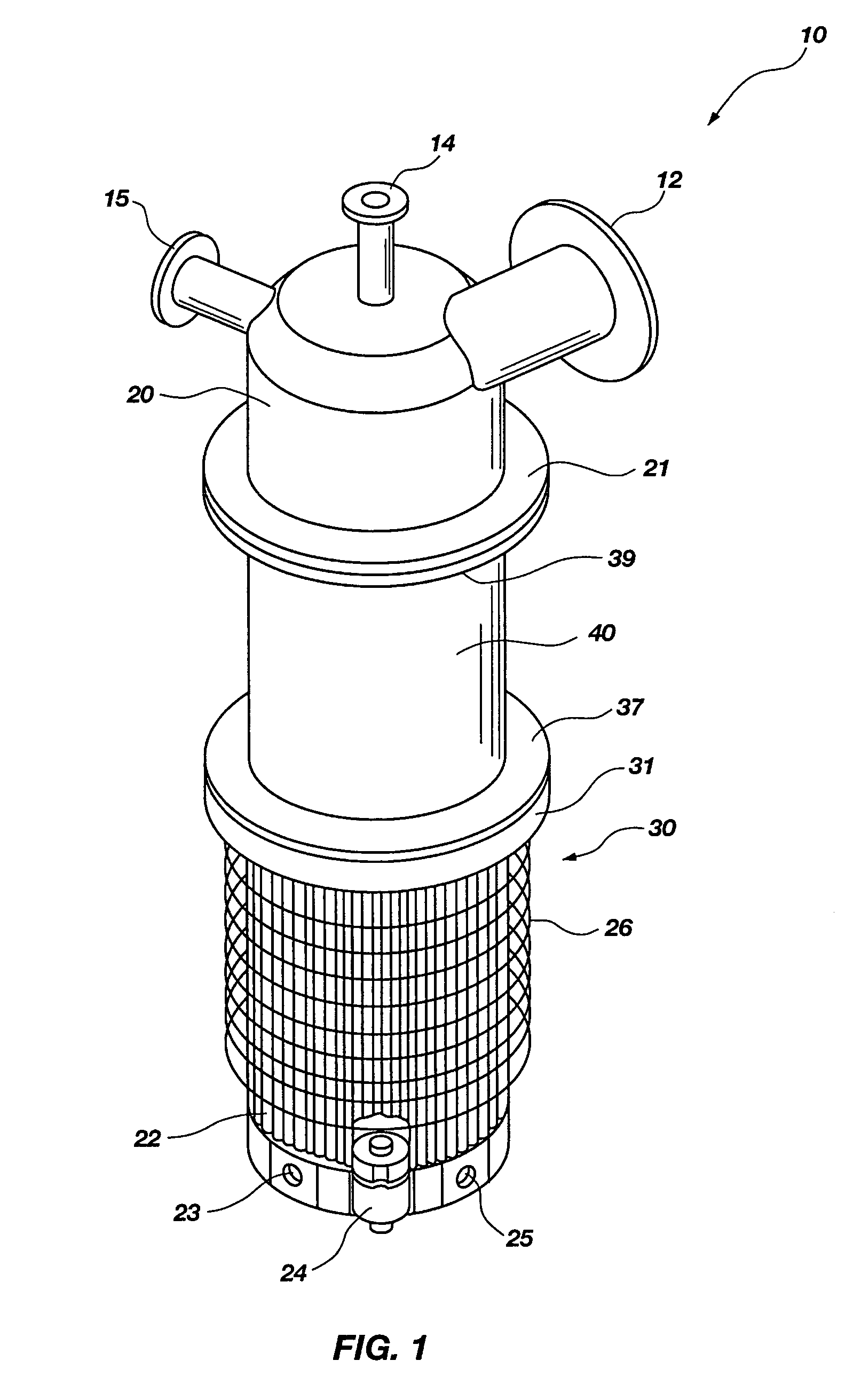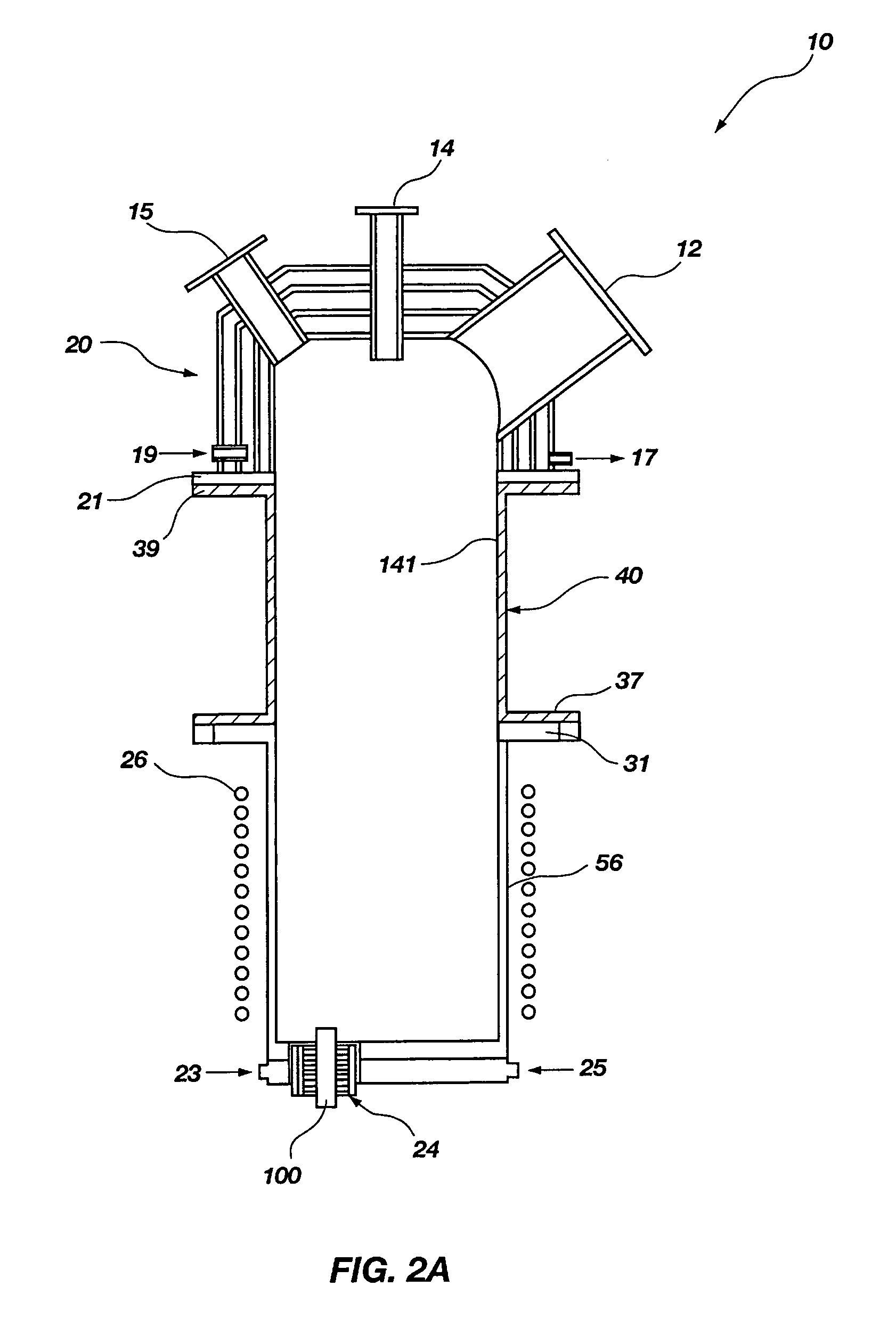Operating an induction melter apparatus
a technology induction melting chamber, which is applied in the direction of furnaces, combustion types, charge manipulation, etc., can solve the problems of relatively long hazardous environment for radioactive materials, relatively non-electrical conductivity of waste glass forming materials used in vitrification systems, and relatively long hazardous environment for types of compounds such as radioactive materials. , to achieve the effect of improving the safety of induction melting apparatus, improving temperature uniformity, and reducing external temperature of the head assembly
- Summary
- Abstract
- Description
- Claims
- Application Information
AI Technical Summary
Benefits of technology
Problems solved by technology
Method used
Image
Examples
Embodiment Construction
[0033]FIGS. 1 and 2A show a perspective view of an induction melter 10 of the present invention as well as a schematic cross-sectional view thereof, respectively. Generally, cold-crucible-induction melter 10 includes head assembly 20 affixed to disengagement spool 40 by way of mating lower flange 21 and upper flange 39 of head assembly 20 and disengagement spool 40, respectively. Disengagement spool 40 is affixed to furnace body 30 by way of lower flange 37, which is affixed to the upper flange 31 of the furnace body 30. Lid assembly 20 of the present invention includes off-gas port 12 for removing gasses from the cold-crucible-induction melter 10 during operation, feed port 14 for adding waste material to the cold-crucible-induction melter 10, and view port 15 for observing the conditions within the cold-crucible-induction melter 10. Also, head assembly 20 includes inlet port 19 and outlet port 17 for cooling the head assembly 20 by flowing a gas therethrough, as described in more ...
PUM
 Login to View More
Login to View More Abstract
Description
Claims
Application Information
 Login to View More
Login to View More - R&D
- Intellectual Property
- Life Sciences
- Materials
- Tech Scout
- Unparalleled Data Quality
- Higher Quality Content
- 60% Fewer Hallucinations
Browse by: Latest US Patents, China's latest patents, Technical Efficacy Thesaurus, Application Domain, Technology Topic, Popular Technical Reports.
© 2025 PatSnap. All rights reserved.Legal|Privacy policy|Modern Slavery Act Transparency Statement|Sitemap|About US| Contact US: help@patsnap.com



